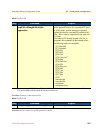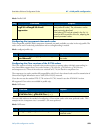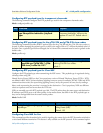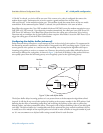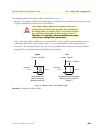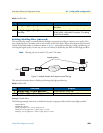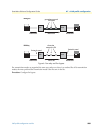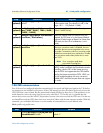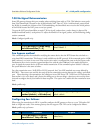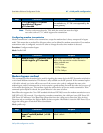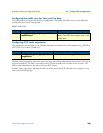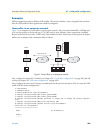
VoIP profile configuration task list 584
SmartWare Software Configuration Guide 47 • VoIP profile configuration
Configuring Fax transmission
Fax is a protocol for electronically transmitting written material in-band over a voice channel. In public
switched telephone networks (PSTN), a fax is handled the same way as a voice conversation. A G3 Fax device
transforms (modulates) a scanned page into audible tones that are transmitted in-band. The receiving device
converts the tones (demodulates) and reconstructs the page. In IP networks, problems can make it difficult to
handle a faxed call in the same way as a voice call:
• If one or more RTP packets that transport the voice (tones) are lost, the receiver can’t reconstruct what the
sender sent.
• Codecs other than G.711 compress the voice streams. They are optimized for compressing voice and not
modulated data. Compressing and decompressing always incurs a loss of data.
SmartWare provides two solutions for fax transmission problems:
• Fax bypass—When a fax transmission is detected by the SmartNode, it automatically switches to a config-
ured fallback codec that does no or little compression. The dejitter buffer is configured with settings opti-
mized for fax transmission.
• Fax relay—Terminates the fax protocol on the SmartNode and sends the reference data over a fax protocol
(T.38) to the receiver. Fax relay has a smaller bit-error-rate than bypass.
• Fax failover—When using fax transmission in SIP, you can configure the SIP gateway first to try T.38, but if
the remote gateway does not support T.38, it will automatically fall back to a high-rate codec.
Both solutions require changing codecs during an established call, which imposes several requirements on the
signaling protocol and the remote gateway. Make sure these requirements are met when configuring a fax trans-
mission mode.
Figure 6 illustrates the difference between Fax relay and Fax bypass.




